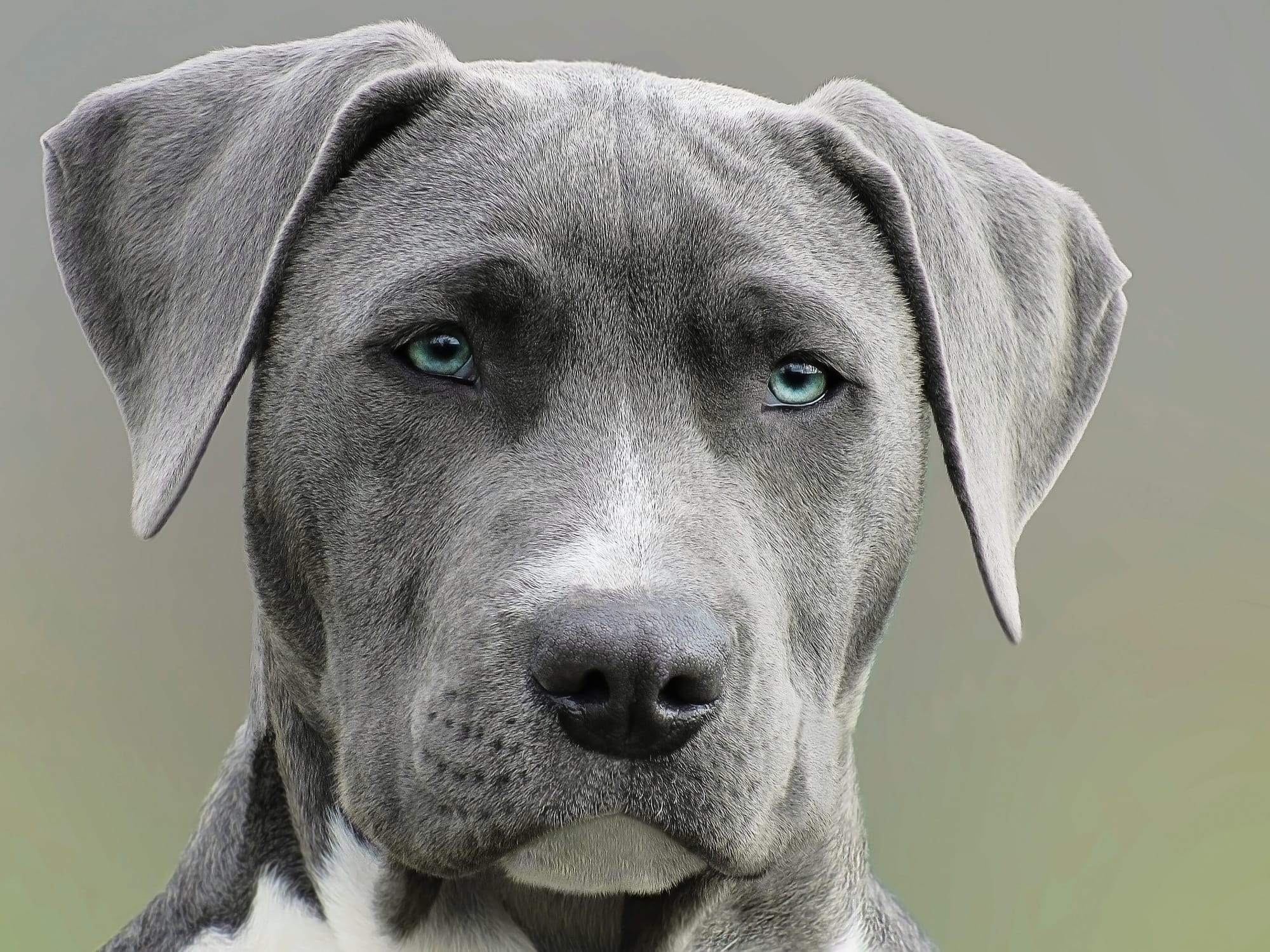It all begins when they are just fluffy balls of fur, wagging their tails with curious eyes exploring the world. From puppies to protectors, this is the remarkable journey of police dogs.
A select group of puppies is chosen, destined for greatness. They are trained to become essential members of the police force. Unlike their siblings, these puppies will not lead a typical domestic life; they are on the path to become heroes in dog coats of many colors.
The Starting Line: Selecting the Puppy
Selection plays a crucial part in the training journey. Not every breed can make the cut. The most popular breeds are German Shepherds, Belgian Malinois, and Labrador Retrievers. These breeds are chosen for their high intelligence, physical strength, and adaptability. A puppy's lineage often plays a part in selection, with breeders examining the dog coat color and traits of the parents and grandparents.
Early Socialization and Training
The training starts with a trip to the puppy's new home, which isn’t the typical household environment. They start living with their handlers, forming a bond that lasts for their entire career. Puppies are introduced to a scratch board for maintaining their nails from a young age, as it’s essential to their future training and missions.
Building Stamina and Problem-Solving Skills
Next, they move on to physical training. Exercise is crucial for building their strength and stamina. Police dogs need to be athletic, agile, and ready for action. Playful activities like hiking and games involving water help puppies build their bodies and minds while having fun. They need to learn to work in various environments, and there is no better way than making it a part of their playtime.
Training also includes mental stimulation. Dogs are introduced to puzzle toys to develop their problem-solving skills. These toys require the dogs to figure out how to get a treat, improving their ability to think independently and make decisions.
Advanced Training and Skills
Once the dogs grow out of their puppyhood and are physically fit and mentally sharp, they move on to advanced training. This phase includes detection work for narcotics, explosives, and in some cases, human scent. They also learn patrol work, which includes tracking, building searches, and criminal apprehension.

Certification and Beyond
After all the training, these dogs need to pass a certification test. The process ensures that the dogs are ready and can perform under pressure. Only after clearing the certification are they called police dogs.
These K9 units have a vital role in law enforcement. Their skills are used for various tasks that humans can't perform as efficiently. Their sense of smell is extraordinary. A police dog can smell a tiny amount of drugs hidden in a vehicle, track a missing person, or detect explosives in a crowded place. They are truly remarkable protectors.
The Bond of a Lifetime
Beyond all the training and skills, there is one factor that plays a significant role in a police dog's career: the bond with their handler. They live together, work together, and form a partnership that is a wonder to behold.
Training Techniques and Schools
Training techniques for these future police dogs are intense and diverse, preparing them for any situation they might encounter on duty.
One effective training method is positive reinforcement, rewarding the dog for their good behavior with treats or praise. This method encourages the dogs to repeat the action, leading to successful training outcomes.
Various schools specialize in K9 police dog training. The trainers in these schools have a deep understanding of the canine mind, ensuring the dogs receive the best training possible. These trainers have a crucial role in shaping the dogs from playful puppies into full-fledged K9 units.
The Role of a Police Dog Handler
Being a handler for a police dog is not an easy task. It's much more than just training the dog; it's about creating an unbreakable bond. A good handler will understand their canine partner's needs and wants, interpreting their behavior and adjusting the training accordingly.
This relationship is not built overnight. It's the countless hours spent together - during training, at home, and on the job that makes the handler and dog a perfect team. A good handler will understand the importance of balance between work and rest, ensuring their canine partner gets adequate downtime and care.
The Challenges Faced and Overcome
Even though these dogs are highly trained, they can still face challenges. Different environments, weather conditions, and criminal behaviors can all pose challenges for police dogs. But the rigorous training they undergo from puppyhood prepares them for these challenges.
It's not just the physical challenges; the mental stress can be overwhelming too. That's why it's essential to ensure these dogs get regular mental health checks.
Retirement and Life Beyond Duty
After a life full of service, there comes a time when these protectors hang up their vests. The typical working life of a police dog is around seven to nine years. After that, they retire and get to enjoy a peaceful life. Most of them stay with their handlers, spending their golden years surrounded by love and care.
Incorporating Technology: The Role of Fi Dog Collars
Even as we cherish the age-old bond between humans and dogs, it's essential to remember that technology can play a crucial role in improving the training process and ensuring the safety of our canine heroes. One such innovative tool is the Fi dog collar.
Enhanced Training with Fi Dog Collars
One of the key areas where Fi dog collars shine is in training. The collars, equipped with GPS technology, can monitor the activity levels of the dog. This is especially useful during the exercise and stamina-building phase of training. Handlers can track their dogs' hiking or running activities, ensuring they are getting the right amount of exercise.
With the Fi dog collar, tracking exercise and activities becomes a breeze. The data from the collar can help handlers create a more personalized training plan, ensuring each dog's unique needs are met. It's a great way to monitor progress and ensure our puppies are on the right path to becoming protectors.
Safety First: Keeping Track of Our Protectors
For police dogs, the work environment can be unpredictable and sometimes dangerous. Here, too, Fi dog collars come to the rescue. With real-time GPS tracking, handlers can always know the exact location of their canine partners, whether they're in training or out in the field. This can be crucial in ensuring the safety of the dogs, especially during high-risk operations.

Fi Collars in Retirement: Ensuring Comfort and Security
Even after retiring from active duty, the Fi dog collar continues to be useful. The fitness tracking feature can help ensure that the retired police dogs are getting adequate exercise for their age and health condition. It's also a great tool for keeping tabs on our furry friends, making sure they are safe and secure in their well-earned retirement.
Frequently Asked Questions
Here are some of the FAQs:
1. What breeds are most commonly used as police dogs?
The most commonly used breeds in police work are the German Shepherd, Belgian Malinois, and Labrador Retriever due to their high intelligence, physical strength, and adaptability.
2. How are police dogs selected?
Selection of police dogs often begins with looking at the puppy's lineage, assessing their parents' and grandparents' traits and abilities. Breeders might look at characteristics such as dog coat color, temperament, and health history.
3. What kind of training do police dogs undergo?
Training for police dogs begins with basic obedience and socialization and progresses to more specialized skills, including detection work for narcotics, explosives, and human scent, as well as patrol work, tracking, building searches, and criminal apprehension.
4. How do Fi dog collars assist in training police dogs?
Fi dog collars, equipped with GPS technology, can track the activity levels of the dogs, assisting in exercise and stamina-building during training. They also provide real-time location tracking, ensuring the safety of the dogs during high-risk operations.
5. How long does a police dog serve before retirement?
The typical working life of a police dog is around seven to nine years. After this, they retire to enjoy a peaceful life, often with their handlers.
6. How are puzzle toys used in training police dogs?
Puzzle toys are used to develop problem-solving skills in dogs. These toys require the dogs to figure out how to get a treat, improving their ability to think independently and make decisions.
7. How is the mental health of police dogs ensured?
Like physical health, the mental health of police dogs is crucial. Regular mental health checks are performed, and adequate downtime is ensured to help them relax and de-stress.
8. What is the role of a police dog handler?
A police dog handler is responsible for training the dog and building a strong, unbreakable bond with them. They live together, work together, and form a partnership that is critical to the success of the dog in their role as a police dog.
9. How does a Fi collar assist in the retirement of police dogs?
The fitness tracking feature of the Fi collar helps ensure that the retired police dogs are getting adequate exercise for their age and health condition. It also helps in keeping tabs on the dogs, ensuring their safety and security in retirement.
10. How does hiking and water play factor into police dog training?
Hiking and water play are integral to a police dog's physical training. These activities help the dogs build their strength and stamina, and they also accustom them to working in different environments.
In Conclusion: A Journey of Transformation and Bonding
From the moment of their selection as puppies, to their rigorous training, their roles as crucial law enforcement members, and their well-deserved retirement, the journey of police dogs is awe-inspiring. These dedicated animals, most commonly German Shepherds, Belgian Malinois, and Labrador Retrievers, are a testament to the power of effective training and the extraordinary capabilities of our canine friends.
Their journey starts early, with the selection process that considers lineage and traits such as dog coat color and temperament. Initial training phases revolve around socialization and basic commands, slowly progressing towards more physical training like hiking and water-based exercises. These activities aim to develop their strength, stamina, and adaptability. Meanwhile, puzzle toys serve to stimulate their minds, honing their problem-solving skills and decision-making abilities.
As they grow, the training becomes more specialized, teaching them skills like detection of narcotics, explosives, or human scent, tracking, and apprehension techniques. Through every step, their bond with their handler grows, forming a partnership that is at the heart of their success as a police dog.
Technology plays an essential part in this journey. Fi dog collars, with features like GPS tracking and activity monitoring, assist throughout the training, active service, and into retirement. These devices offer valuable insights and safety measures that contribute significantly to the efficiency and security of these dogs' routines.
Once their service years conclude, these dogs retire, often spending their golden years with their handlers, monitored and cared for with the help of tools like the Fi collar. These dogs serve as more than law enforcement units. They're companions, heroes, and a symbol of the deep bond between humans and dogs.
This journey, from puppies to protectors, showcases the strength, intelligence, and spirit of these dogs. As they transition from playful pups to dedicated protectors, they become an integral part of our society's safety fabric. Their tale truly underscores the saying – not all heroes wear capes; some have wagging tails and a heart full of loyalty and courage.

